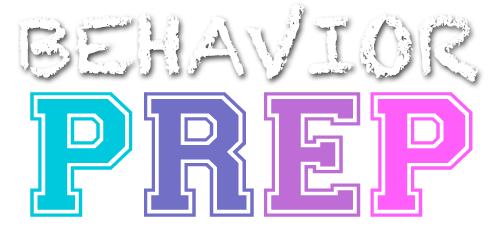H.8 Collaborate with other to support an enhance client services
Collaborating with others to support and enhance client services involves actively working with other professionals, caregivers, or individuals involved in the client’s care to ensure the intervention is consistent, comprehensive, and effective. Collaboration enhances the overall quality of services and creates a coordinated effort to achieve the best outcomes for the client.
Collaboration is an essential aspect of a BCBA’s role in providing effective services to clients. BCBA’s work with a variety of individuals who support and provide services to clients, including caregivers, educators, therapists, and other professionals. Here’s a detailed description of how a BCBA collaborates with others in supporting clients, along with examples:
Communication and Information Sharing
The BCBA maintains open lines of communication with individuals involved in the client’s care. They share relevant information about the client’s behavior assessment, treatment goals, progress, and strategies used in intervention. This ensures that everyone comprehensively understands the client’s needs and the ongoing intervention plan.
Example: The BCBA communicates with a client’s speech therapist to discuss the specific language targets and strategies in the behavior intervention plan. They share data and progress updates to ensure coordinated efforts.
Team Meetings and Case Conferences
The BCBA actively participates in team meetings and case conferences to collaborate with other professionals working with the client. These meetings provide an opportunity to discuss observations, share insights, and develop cohesive strategies to support the client’s progress.
Example: The BCBA attends a multidisciplinary team meeting for a child with developmental delays. They collaborate with the child’s occupational therapist, physical therapist, and psychologist to align interventions and establish consistent approaches across settings.
Training and Capacity Building
The BCBA provides training and guidance to individuals supporting the client to ensure consistent implementation of behavior intervention strategies. They share evidence-based practices, teach new techniques, and provide ongoing support to build the capacity of caregivers and professionals involved in the client’s care.
Example: The BCBA conducts a training session for a client’s teachers and aides on behavior management strategies. They provide instruction on implementing reinforcement systems, data collection, and prompt fading techniques to promote consistency across the school environment.
Collaborative Goal Setting
The BCBA collaborates with caregivers, educators, and other professionals to establish shared goals for the client. They work together to define meaningful objectives and prioritize the areas of intervention based on the client’s needs and available resources.
Example: The BCBA meets with a child’s parents, teacher, and speech-language pathologist to set collaborative goals. They collectively prioritize communication skills and develop strategies to address language deficits across home, school, and therapy sessions.
Progress Monitoring and Reporting
The BCBA regularly communicates with the client’s support team to share progress updates and assessment findings. They provide detailed reports and feedback on the client’s response to intervention, identify areas of progress, and discuss any challenges or adjustments needed.
Example: The BCBA meets with a client’s parents and behavior technician to review the data collected during intervention sessions. They discuss the client’s progress, address any concerns, and jointly develop strategies to enhance treatment effectiveness.
Consultation and Problem-Solving
The BCBA offers consultation and problem-solving support to other professionals working with the client. They provide guidance on behavior management techniques, functional assessment, data collection, and individualized intervention strategies.
Example: The BCBA consults with a child’s psychologist who is working on addressing challenging behaviors. They collaboratively analyze behavior data, identify possible maintaining variables, and develop behavior intervention plans to target specific functions of behavior.
Continuous Feedback and Adaptation
The BCBA maintains an ongoing feedback loop with caregivers and professionals to ensure that interventions are adapted and refined based on the client’s changing needs. They actively seek input, listen to concerns, and make necessary adjustments to improve the effectiveness of the intervention.
Example: The BCBA solicits feedback from a child’s caregiver regarding the feasibility of implementing behavior strategies at home. Based on the caregiver’s input, they modify the intervention plan to better align with the family’s routines and resources.
Collaboration with others who support and provide services to clients is vital for creating a cohesive and comprehensive approach to behavior intervention. It promotes consistency, shared understanding, and maximizes the impact of interventions across various settings in the client’s life.
